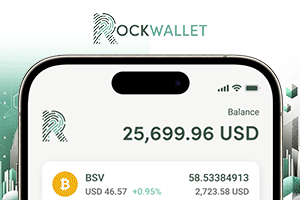|
Getting your Trinity Audio player ready...
|
OpenAI, the maker of ChatGPT, has urgently ramped up efforts to capture the Indian market by launching a budget-friendly version of its ChatGPT service, ChatGPT ‘Go,’ priced at just ₹399 ($4.57) per month. This new offering significantly lowers the barrier for users while providing 10 times more message limits, file uploads, and image generation.
OpenAI has also added support for India’s most popular digital payment method, Unified Payments Interface (UPI). For the first time, users can subscribe to any ChatGPT plan, including Go, Plus, and Pro, using UPI alongside traditional payment methods. This update is expected to make onboarding faster and more convenient for millions nationwide, signaling OpenAI’s serious commitment to expanding its footprint in one of the world’s fastest-growing tech markets.
“We’re excited to share that we’ve launched ChatGPT Go in India in a new subscription tier that makes our most popular features more accessible,” said Nick Turley, head of ChatGPT.
“In addition, all subscriptions in India are now priced in INR and can be purchased using UPI…Making ChatGPT more affordable has been one of the top requests from our users. We’re starting with India and will learn from feedback before expanding Go to other countries,” Turley added.
ChatGPT Go highlights India’s growing strategic importance for the Sam Altman-led artificial intelligence (AI) powerhouse. With millions in the country already relying on the free version, this new, lower-cost plan is designed to meet the rising demand for enhanced access, without requiring users to pay for the more expensive tiers. It’s a clear push to quickly convert a large, engaged user base into paying customers.
OpenAI’s move to adopt UPI for payments marks a critical step in accelerating the adoption of ChatGPT across India. Serving 491 million individuals and 65 million merchants, UPI is the country’s most popular digital payment system, and by enabling it, OpenAI removes a major barrier for millions who lack access to credit or debit cards, particularly students, young users, and those in smaller towns.
UPI’s fast, secure, and card-free transactions make subscribing to ChatGPT quicker and more convenient, encouraging more users to upgrade from the free tier. India is already ChatGPT’s second-largest user base, and the new $4.57 per month plan is clearly aimed at converting a wider audience into paying customers.
As competition intensifies from Google’s Gemini (NASDAQ: GOOGL) and Perplexity—both offering India-specific or free premium access—UPI integration gives OpenAI an urgent edge in the race for market dominance. Supporting this widely trusted, government-backed payment method also shows OpenAI’s intent to localize and build lasting trust in one of the world’s fastest-growing digital economies.
OpenAI expands in India
OpenAI is also accelerating its expansion in India with plans to open its first office in New Delhi later this year, marking a major step in its strategy to solidify its presence in its second-largest user base. The company has reportedly registered as a legal entity in India and has already begun assembling a local team, signaling a strong commitment to the world’s most populous nation. India is not only home to ChatGPT’s largest student user base, but the number of weekly active users in the country has quadrupled over the past year.
“We are opening our first office in India later this year! and I’m looking forward to visiting next month. AI adoption in India has been amazing to watch—ChatGPT users grew 4x in the past year—and we are excited to invest much more in India,” OpenAI CEO Sam Altman said on X.
This move comes just days after OpenAI launched its most affordable monthly plan yet—priced at $4.57—aimed at tapping into India’s nearly 1 billion Internet users. However, OpenAI’s push comes amid mounting legal pressure, as Indian media outlets and publishers accuse the company of using copyrighted content without authorization for training purposes—allegations OpenAI firmly denies. At the same time, competition is heating up, with Google’s Gemini and AI startup Perplexity offering premium features for free to lure Indian users. With legal battles brewing and rivals moving fast, OpenAI is racing to establish a firm foothold in one of the world’s most dynamic digital markets.
“The level of excitement and opportunity for AI in India is incredible. India has all the ingredients to become a global AI leader—amazing tech talent, a world-class developer ecosystem, and strong government support through the IndiaAI Mission. Opening our first office and building a local team is an important first step in our commitment to make advanced AI more accessible across the country and to build AI for India, and with India,” Altman reportedly said.
Altman’s statements marked a notable change in his outlook compared to his statements in 2023, when he expressed skepticism about the ability of countries outside the United States to develop cutting-edge AI technologies. His recent engagement signals a recognition of India’s growing influence in the global AI landscape and its potential to become a key contributor to the next wave of AI advancements.
According to Ashwini Vaishnaw, India’s information technology minister, India “is uniquely positioned to drive the next wave of AI-led transformation.”
“As part of the IndiaAI Mission, we are building the ecosystem for trusted and inclusive AI. We welcome OpenAI’s partnership in advancing this vision to ensure the benefits of AI reach every citizen,” Vaishnaw said on X.UPI to drive India’s digital economy growth
India ranks third globally in digitalisation, and by 2030, the digital economy is expected to account for nearly one-fifth of overall GDP (gross domestic product), informed Indian Prime Minister Narendra Modi during India’s 79th Independence Day last August 15.
The digital economy contributed 11.74% to national income in 2022–23 and is projected to rise to 13.42% by 2024–25, driven by advancements in AI, cloud computing, and digital infrastructure.
India’s payment landscape has been radically transformed in just a decade, shifting from cash and cards to a digital-first economy, driven by the explosive growth of UPI. This government-backed system has become the backbone of financial inclusion, enabling fast, secure, and low-cost payments even in rural and remote regions.
UPI now powers over 640 million transactions daily, surpassing global giants like Visa (NASDAQ: V). UPI processes more than 18 billion transactions monthly, making up 85% of all digital payments in India. According to the International Monetary Fund (IMF), India leads the world in fast payments, largely driven by UPI, which now accounts for nearly 50% of global real-time digital payments.
What’s even more striking is that UPI reached this scale in just nine years, becoming the world’s biggest real-time payment system. This momentum isn’t just reshaping India’s economy; it’s setting the global benchmark.
India pushes to make UPI a BRICS-wide payment standard
India is actively pushing to make UPI a standard across the BRICS alliance, which now includes six new member countries, a move that could transform cross-border payments, strengthen remittances, and position India as a global force in digital finance, according to an official statement. This initiative could significantly boost financial inclusion on an international scale while elevating India’s status as a tech leader in digital payments.
With nearly 50% of the world’s real-time digital transactions now powered by UPI, the system’s global influence is growing rapidly. Its open, interoperable design, built for speed and ease of use, has proven to be a powerful model not just in India but beyond. UPI is already live in several countries, including the United Arab Emirates, Singapore, Bhutan, Nepal, Sri Lanka, France, and Mauritius. Its launch in France marks UPI’s entry into Europe, enabling Indian travelers and residents to make payments without the complications of traditional foreign transactions.
This global success is no accident. It’s the result of India’s long-term investment in digital infrastructure, creating secure digital IDs, expanding internet access, and connecting millions to the formal financial system. These foundational steps laid the groundwork for UPI’s meteoric rise and its growing global footprint.
However, India’s digital payments landscape was once held back by closed-loop systems, where transactions were locked within individual apps or platforms. Users could only send money to others on the same wallet, and even though IMPS (immediate payment service) allowed bank transfers, it wasn’t accessible through third-party apps. This limited reach and slowed digital adoption.
That changed rapidly with the arrival of UPI. It broke these silos by creating a unified platform that connects banks and fintech apps seamlessly. Today, anyone can use any UPI-enabled app to pay someone using a different app or bank—no compatibility issues, no barriers, and interoperability at its best.
The impact has been immediate and powerful. Users now enjoy the freedom to choose apps they trust, while competition among providers pushes innovation and better security. As more platforms join the network, the ecosystem grows stronger. This openness has fueled UPI’s explosive adoption, turning it into a payment solution millions rely on daily. The shift wasn’t just a tech upgrade; it was a turning point for India’s digital economy.
In order for artificial intelligence (AI) to work right within the law and thrive in the face of growing challenges, it needs to integrate an enterprise blockchain system that ensures data input quality and ownership—allowing it to keep data safe while also guaranteeing the immutability of data. Check out CoinGeek’s coverage on this emerging tech to learn more why Enterprise blockchain will be the backbone of AI.
Watch: Exploring use cases for blockchain in India

 08-27-2025
08-27-2025 





